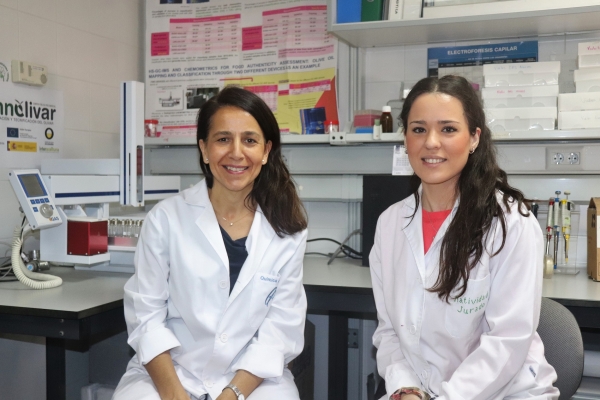Olive oil classification is currently very costly and slow. In order to categorize oil into extra virgin (EVOO), virgin (VOO) and lampante olive oil (LOO), an offical method is used, consisting of a physicochemical analysis and a sensory analysis in the end. This last part is based on the work of a panel of expert tasters who try each olive oil one by one in order to determine its category. This process is very costly for the bottlers. For this reason, they are keen on developing a complementary analytical classification method. Moreover, there are very few expert olive oil tasters in other countries, hence the urgency to find another way to categorize olive oil that does not involve sensory analysis.
A University of Cordoba research group, headed by Analytical Chemistry Professor Lourdes Arce, has been working on a solution to this issue since 2011, with financial support from the non-profit Spanish Olive Oil Interprofessional Organization (in Spanish Interprofesional del Aceite de Oliva Español).
The new methodology is based on analyzing the oil’s aromatic fraction –that is to say volatile organic compounds- as if it were the nose of a human taster. This is done by using gas chromatography and ion mobility spectrometry, which is a technique that separates ions when in gas state.
This instrument generates 3D graphics (with retention time, drift time and the intensity of the signal as variables) of each volatile chemical compound in each sample of olive oil, resulting in a large number of data to process, making it difficult for companies to adopt this methodology.
To ease its implementation, the group studied two strategies for dealing with data: the first used spectral fingerprints (as in all the chemical information in each olive oil) and the second used a series of specific signals, 113 of over 200,000 chemical data that make up a spectral fingerprint.
701 heterogeneous olive oil samples were analyzed. These samples came from different kinds of olives at different degrees of ripeness, from different geographical areas and that had been processed and stored in different ways. These samples were provided by the Spanish Olive Oil Interprofessional Organization in partnership with with the Spanish Ministry of Agriculture, Food and the Environment along with the Andalusian Regional Government’s Department of Agriculture, Fishing and Rural Development.
In the end, it was concluded that the strategy based on markers was reliable in predicting the classification of olive oil samples, in addition to being easier to implement within the industry than the strategy of using the whole spectral fingerprint. In any case, the models should be recalibrated each year, and include new oil samples from the current season. The research group continues to work on this line of research in order to determine the minimum number of samples needed for recalibration without losing predictive ability to categorize olive oil.
María del Mar Contreras, Natividad Jurado Campos, Lourdes Arce, Natalia Arroyo Manzanares. A robustness study of calibration models for olive oil classification: Targeted and non-targeted fingerprint approaches based on GC-IMS. FOOD CHEMISTRY https://doi.org/10.1016/j.foodchem.2019.02.104


